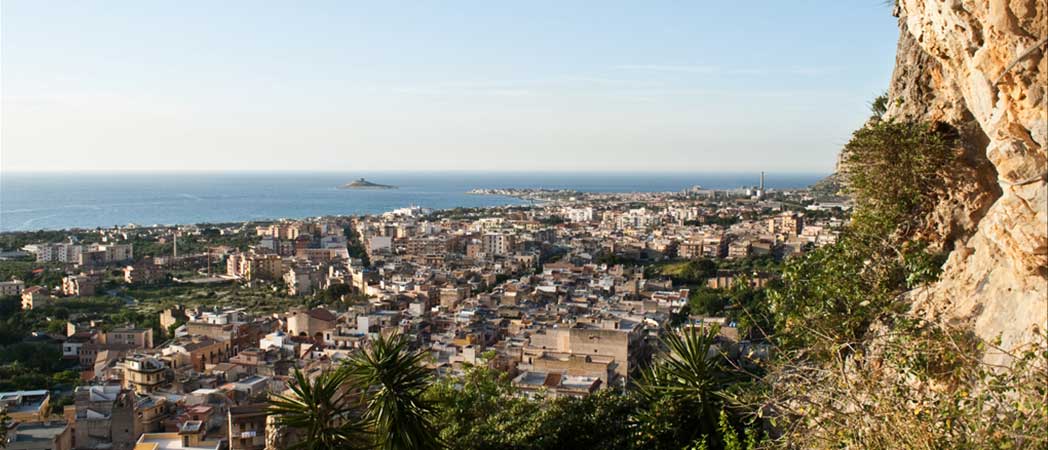
Capaci, near Palermo and Mozia: a combination that has its roots in a remote past where history mingles with legend.
The origins of Capaci
It seems that the Capaci name comes from the Latin phrase Caput-Capitis aquae, understood as water source as proof that the area was once characterized by the presence of numerous aquifers which helped the development of luxuriant vegetation. Hypothesis anything but far-fetched as evidenced by the Quarara basin in the locality of La Portella.
It is an area that has been inhabited since the Upper Paleolithic era thanks to the favorable conditions it had.
Today's Capaci, however, originates from the beginning of the sixteenth century right under the Montagnola Santa Rosalia as can also be seen from the foundations dating back to that period which were part of the Mother Church which welcomed a small community of faithful.
Returning to the origins of Capaci we can find a historical mention in the XNUMXth century BC by the historian Thucydides when, speaking of Mozia, he states that this town was located in the vicinity of the Capece farm.
This means that the origin of Capaci is closely connected with the nearby Mozia which historians indicate to be located on a small island seven hundred paces from the beach with which it was connected by an isthmus.
Capaci and the dreaded Mozia
Mozia is referred to as a developed town having significant strategic importance both commercially and militarily, built around the eighth century BC and suddenly disappeared in 397 BC perhaps at the hands of the Athenians as it was considered a threat to their trade.
There is a supposition that reports the disappearance of nearby Carini (Ikkara) an agglomeration inhabited by the autochthonous Sicani, hostile to Segesta for which the Athenians intending to receive their favours, waged war on this city. Probably this is the origin of the end of Motya and, almost certainly, the beginning of Capaci which was born in the period immediately following the Peloponnesian wars which caused an obvious political reorganization of the territory.
However there is also a version that says that Capaci had a totally Arab origin dating back to the year 948 just as the Islamic domination was in place during the reigning dynasty of the Kalbiti who remained from 1040 to XNUMX in charge of many territories of Sicily even if it is possible to object that, through the archaeological finds found in the area, it is more legitimate to lean towards a pre-existing civilization with Greek origins.
The tourist Capaci
Today Capaci, only 18 kilometers from Palermo, is a place that offers the tourist various ideas to be explored starting from the seventeenth century Mother Church in Baroque style and characterized by an imposing pincer staircase inside which there are many works of art such as the vault frescoed by Tresca in the eighteenth century and other paintings attributable to his school. Also noteworthy is the sixteenth-century wooden statue of Sant'Erasmo from the school of Gagini.
Don't miss it either Church of San Rocco dating back to the eighteenth century and also home to numerous works of art including several wooden statues from the eighteenth and nineteenth centuries.
Also to be admired Palace of the Counts Pilo, today seat of the Town Hall, built on the remains of a sixteenth-century castle during the eighteenth century.
Concluding on Capaci
We must bear in mind the fact that primitive settlements have been found in this territory which objectively determine that the same was inhabited since ancient times by native populations but also by those who arrived on the island and who created the historical premises of Capaci. In fact, starting with the Phoenicians and continuing with the Carthaginians, Greeks, Romans, Arabs and so on, each domination has left an indelible mark on Capaci, while respecting what already exists and, therefore, avoiding replacing itself by resetting what was inherited in the past but implementing the civilization.
Finally, were Capaci and Mozia actually two realities connected to each other in some way as the legend says or are they just assumptions that do not find objective confirmation in reality as they are not worthily documented? This question still remains unsolved today but in the imagination, anything is possible. After all, it is enough to blow on the dust of history to have a clearer vision of what has been. It is not true?
© Image by Federico Patti from Palermo, Italy, CC BY-SA 2.0, via Wikimedia Commons









